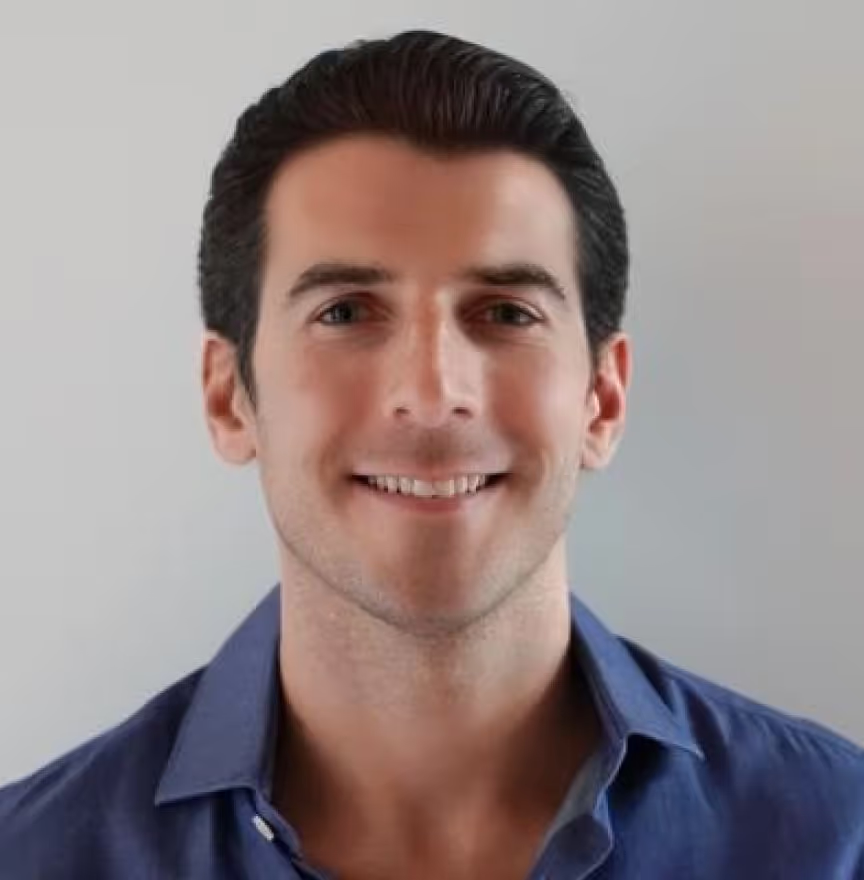A 2 minute assessment to get a personalized mental health or alcohol recovery plan.
Think you have to quit drinking forever to overcome alcohol problems? The Sinclair Method says otherwise - and the science behind it may surprise you.
What You'll Discover:
- Why a treatment that lets you continue drinking actually works better than abstinence for many people.
- The neuroscience behind how your brain learns to crave alcohol and how to unlearn it.
- What pharmacological extinction means and why it changes everything about recovery.
- How taking one pill before drinking could gradually eliminate your desire to drink excessively.
You've tried cutting back on drinking before. Maybe you've gone weeks or even months without a drop of alcohol, only to find yourself right back where you started—or worse. The all-or-nothing approach to alcohol recovery has left you feeling like a failure, trapped between two impossible choices: drink too much or never drink again.
Or at least, that's what you've been told. In actuality, there's a third option that most people have never heard of - one that lets you continue drinking while your brain gradually loses interest in alcohol. The idea sounds contradictory, maybe even dangerous. After all, isn't abstinence the only real solution for alcohol problems? But in actuality, more recent research into addiction treatment has shown that forced abstinence often fails precisely because it doesn't address what's happening in your brain.
It may be time to reconsider everything you think you know about alcohol recovery if finding a sustainable solution that actually works is a priority.
What Is The Sinclair Method and Why Haven't You Heard of It?
Don't let the traditional recovery industry fool you into thinking complete abstinence is your only option. The existence of an effective treatment that involves controlled drinking with medication is real, but it challenges the entire foundation of conventional addiction treatment.
Many researchers, doctors and addiction specialists will tell you that the Sinclair Method has been confirmed to be effective in more than 90 clinical trials around the world and observed to be successful in approximately 80 percent of problem drinkers. Even if you've failed at quitting drinking multiple times before, this method offers a completely different approach. It's particularly effective for people who can't imagine never drinking again. For example, professionals who need to attend business dinners or people from cultures where alcohol is deeply embedded in social life.
Now that you have a better idea that alternatives exist, let's delve further into how this counterintuitive method actually works, some of which may be very surprising.
The Method Works By Literally Rewiring Your Brain's Response to Alcohol
The undeniable truth is that every kind of alcohol dependence involves learned brain patterns. There's the initial learning phase where your brain discovers alcohol provides pleasure, as well as the reinforcement that happens every time you drink.
How Your Brain Gets Addicted
This is one of the major breakthroughs Dr. David Sinclair made in his research. Every time you consume alcohol, your brain releases endorphins - natural opiates that create pleasure. The Sinclair Method for Alcohol Use Disorders is an evidence-based treatment for problematic drinking that addresses this mechanism directly. Research has shown this endorphin release causes:
- Reinforcement of drinking behavior
- Creation of powerful neural pathways
- Association between alcohol and reward
- Compulsive desire to repeat the experience
- Tolerance that requires more alcohol for the same effect
Breaking the Connection With Naltrexone
Although your brain has learned to love alcohol, that learning can be reversed. Naltrexone was FDA-approved for Alcohol Dependence in 1994 and has been extensively studied. But here's where it gets interesting - instead of taking it daily like traditional treatment suggests, you only take it one hour before drinking. When you take Naltrexone prior to drinking, it blocks endorphins, the naturally occurring opiates in the brain, from being released when alcohol is consumed. The medication blocks:
- Endorphin release from alcohol
- The reward signal in your brain
- Reinforcement of drinking patterns
- The pleasure response that drives compulsion
Pharmacological Extinction Actually Happens
After taking naltrexone before drinking for several months, something remarkable occurs. That's because your brain stops associating alcohol with pleasure through a process called pharmacological extinction.
Research published in the New England Journal of Medicine explains that blocking opioid receptors with naltrexone might be one potential treatment approach to reduce alcohol use (by reducing the reward or pleasure of drinking).
The extinction process includes:
- Gradual reduction in cravings
- Natural decrease in consumption
- Loss of obsessive thoughts about drinking
- Ability to take or leave alcohol
- Some people becoming completely indifferent to drinking
Worried this sounds too good to be true? The pattern of gradually losing interest rather than white-knuckling through cravings is exactly what makes this method sustainable.
The Science Behind Why It Works
Many people are surprised to find that naltrexone's effectiveness is so well-documented. It's now believed that the landmark COMBINE study, involving over 1,300 patients, found that naltrexone was more efficacious than placebo in increasing the percentage of days of abstinence (80.6% vs. 75.1%) and in reducing the risk of a heavy-drinking day (66.2% vs. 73.1%).
The timeline for results varies because:
- Neural pathways take time to weaken
- Your brain needs repeated "lessons" that alcohol isn't rewarding
- Individual brain chemistry affects the speed
- Consistency matters more than time
Why Compliance Is Everything
Another serious issue with the Sinclair Method is that it requires absolute consistency. The actual process includes taking naltrexone one hour before consuming alcohol, then drinking as you normally would. Even if you only skip naltrexone once before drinking, you risk:
- Reinforcing the old neural pathways
- Getting a huge endorphin rush that sets back progress
- Confusing your brain's extinction learning
- Potentially starting the process over
The issue of compliance is another reason why support and accountability matter. There are far too many people who've given up just before breakthrough, but those who stick with it consistently report life-changing results.
The Other Undeniable Truth - Why Abstinence Often Fails
The other major revelation about the Sinclair Method is understanding why traditional abstinence approaches have such poor success rates. You may have been told willpower is the answer, but according to Sinclair's own research, the use of naltrexone in the treatment of alcohol use disorder can have a 78% efficacy rate. Compare this to abstinence-only approaches, where relapse rates often exceed 90% within the first year.
Not all abstinence attempts fail, but the odds are significantly stacked against long-term success compared to pharmacological extinction. Very few people with alcohol problems can simply decide to stop and maintain that forever. More often it's a cycle of quitting, relapsing, shame, and quitting again.
What might be most troubling is the fact that abstinence doesn't actually change your brain's wiring. Other issues like the "deprivation effect" - where denying yourself something makes you want it more - also make abstinence unnecessarily difficult.
Why The Sinclair Method Isn't More Widely Known
Now with better understanding of how addiction works in the brain, you'd think this method would be everywhere. But more importantly, there are several reasons it remains relatively unknown.
What's most concerning about the lack of awareness is that millions of people are suffering unnecessarily. The treatment industry is built around abstinence-based programs. Essentially, there's a massive infrastructure - rehabs, 12-step programs, counseling approaches - all based on the abstinence model. That is why many professionals haven't even heard of the Sinclair Method.
This is obvious in the United States, but countries like Finland have made it a standard treatment option. The more progressive healthcare systems adopt it, the more clear it becomes that pharmacological extinction works. It will take time for the U.S. to catch up.
The takeaway is that if you're struggling with alcohol and haven't heard of the Sinclair Method, you're not alone - but you now have information most people don't.
The good news is that more providers are learning about this approach, and you can advocate for yourself by bringing research to your doctor.
Taking Control With a Method That Actually Makes Sense
Clearly, the idea of drinking your way sober sounds paradoxical. But understanding the neuroscience reveals why it's actually logical.
In addition to the high success rates, the Sinclair Method offers something abstinence can't - a normal life. You can attend social events without explaining why you're not drinking. You don't have to identify as an "alcoholic" forever. You can have a glass of champagne at a wedding if you want (with naltrexone first, of course).
Let's look at a real-world example. Imagine you're someone who drinks too much at business dinners, damaging your professional reputation. With abstinence, you'd have to explain why you're not drinking, potentially revealing personal struggles to colleagues. With the Sinclair Method, you take naltrexone beforehand, have a drink or two naturally, and find you're not interested in more. Your colleagues notice nothing except that you seem more in control.
Another key consideration is that the method works for different types of drinkers. Whether you're a daily drinker, a binge drinker, or somewhere in between, the process of extinction works the same way.
NEED TO KNOW: The Sinclair Method requires 100% compliance - you must take naltrexone one hour before every drinking session without exception for the treatment to work.
The Realistic Expectations You Need to Have
If you're considering the Sinclair Method, understanding what to realistically expect is crucial.
The first few weeks might feel disappointing. You'll take naltrexone, drink, and possibly notice little difference. Some people even drink more initially as they test whether the medication is "working." This is normal and doesn't mean failure.
Around month 2-3, most people notice they're naturally drinking less. Not through willpower, but through genuine disinterest. The second glass doesn't seem appealing. You might leave drinks unfinished - something previously unthinkable.
By month 4-6, many people report a fundamental shift. Alcohol becomes just another beverage, not an obsession. Some choose to continue moderate drinking, while others lose interest entirely.
But here's what's critical to understand: as noted by addiction specialist Dr. John Umhau, the Sinclair Method requires a lifetime commitment. This isn't a cure that lets you drink without consequences. It's a method that gradually removes your compulsion to drink excessively. While it minimizes cravings, people also drink for reasons beyond physical dependence—social pressure, habit, emotional regulation, or boredom.
Is The Sinclair Method Right for You?
The Sinclair Method works best for people who are motivated to change but can't imagine complete abstinence. If you've tried quitting before and relapsed, if you're a functional drinker who's worried about progression, or if you want to regain control without giving up alcohol entirely, this might be your answer.
However, if you have severe physical dependence with dangerous withdrawal symptoms, you'll need medical detox first. If you have liver disease or take certain medications, naltrexone might not be safe. And if you're looking for a quick fix without commitment to the process, this isn't it.
Some people may experience side effects from naltrexone, including nausea, headaches, or fatigue. These are typically mild and temporary, but they can affect treatment adherence in the early stages.
The method requires patience, consistency, and often a shift in how you think about recovery. Instead of counting sober days, you're actively retraining your brain. Instead of avoiding triggers, you're facing them with pharmacological protection.
Interested in exploring whether the Sinclair Method could change your relationship with alcohol?
If you're tired of the all-or-nothing approach to alcohol problems, if you want a scientific solution that doesn't require lifelong abstinence, support is available. Choose Your Horizon offers 100% online, confidential access to Naltrexone treatments with providers who understand the Sinclair Method.
Interested in learning if this could work for you? Take the online Alcohol Use Assessment to find out if the Sinclair Method and naltrexone treatment could help you regain control without giving up alcohol entirely.




